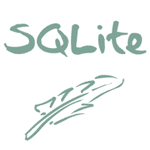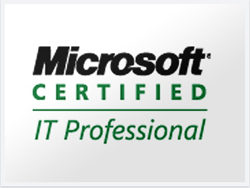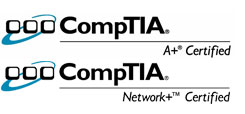A Beginner’s Guide to Becoming One with SQL

If you don’t know what SQL is, it stands for Structured Query Language. It is a programming language that allows for the access of manipulation of databases and their various tables. This language follows a strict set of standards created by ANSI (American National Standards Institute). This means that regardless of what version is used on a server, there will be certain aspects that must be uniform throughout every sort of implementation.
 In short, SQL can be used for the creation of databases, tables, and procedures in a database. It can also run queries through a database, insert records into a database, update records in that database, and retrieve data from a database. In order to show any sort of data from a database that you are manipulating with SQL, you will need to run an SQL server or another similar RDBMS (relational database management system) database program like Microsoft Access or MySQL. You will then need to use a server side scripting language such as PHP or ASP, and then a regular website programming language such as HTML, which can be used along with CSS.
In short, SQL can be used for the creation of databases, tables, and procedures in a database. It can also run queries through a database, insert records into a database, update records in that database, and retrieve data from a database. In order to show any sort of data from a database that you are manipulating with SQL, you will need to run an SQL server or another similar RDBMS (relational database management system) database program like Microsoft Access or MySQL. You will then need to use a server side scripting language such as PHP or ASP, and then a regular website programming language such as HTML, which can be used along with CSS.
Actually creating a database is very straightforward in SQL. It is a very simple, single line of code:
CREATE DATABASE dbname;
Once you create a database, you must create tables in order to put data into that database. Here’s a sample line of code that will do just that:
CREATE TABLE name( col1 datatype, col2 datatype, …);
Where the name field is (col1, col2), you simply title the column of the table, such as “FirstName” or “LastName”. The datatype is fairly self explanatory. This is where you set the type of variable that you will want to coincide with the column name. Generally these will either be TEXT or and INTEGER, but there are other types of data that variables can be set to, which are more advanced such as DATE and CURRENSY.
It is equally as easy to get rid of a table with the DROP command. So, if you need to delete a table, you can just do:
DROP TABLE User;
As with any database, SQL gives you the commands to insert as well as modify the data that is in your tables. Here is a template you can follow in order to insert data:
INSERT INTO target [(field1[, field2[, ...]])]
VALUES (value1[, value2[, ...]);
 Clearly, this format is very easy to mess up, and typing out the code to do it can become very tedious. This is why many webmasters make use of database front ends such as Microsoft Access or SQLite, which provide the ability to manually enter data into fields nad tables in an interface very similar to that of Microsoft Excel. This method would be great for updating data that takes field from end users, though.
Clearly, this format is very easy to mess up, and typing out the code to do it can become very tedious. This is why many webmasters make use of database front ends such as Microsoft Access or SQLite, which provide the ability to manually enter data into fields nad tables in an interface very similar to that of Microsoft Excel. This method would be great for updating data that takes field from end users, though.
As you can see, SQL is very, very similar to the English language. Even the graphical programs mentioned earlier (Microsoft Access and SQLite) convert what you are doing graphically into SQL commands that can be understood and then interpreted by the database. These two facts make the learning curve of SQL extremely low, if you have not noticed already. For instance, let’s take a look at an SQL query. As all other type of SQL commands presented before, it is very similar and appears to be written almost in English. Check out the code below:
SELECT StockNumber
FROM Prices
WHERE Price > 5
If you read this and guessed that it selected all of the data in the table “StockNumber” in the Database of “Prices” , when the price of that item is above 5, you are absolutely correct and are catching on quick. If you did not get it right away, do not worry, just try to read the code out loud as if it was an English sentence and do not think to hard on it. You will get the hang of it eventually. While learning the language, you should also keep in mind that it is not case sensitive, meaning the FROM is equivalent to from, or FRom, or frOM, or any other variation you can make. This means you cannot name variables, tables, or databases the same, and rely on capitalization to differentiate between them.
Speaking of English, you can also create phrases by joining queries with fixed text in order to produce results that are immediately readable by the end user with code such as:
SELECT FirstName & " " & Lastname & " works in the " & Dept & " department" AS Job
FROM User;
This would create and print a group of strings that look something like this “Zachary Davis works in the writing department”. This will also give that full phrase a custom title of “JOB”. Obviously, this will all be coming from the “User” table, and will include lines for all possible users in that table, so, if there are five users, there will be five lines. The ampersands (“&”) are what connects all of the separate parts of the phrase together. The string outputted could not be put together without them, and function the exact same way that plus signs do (“+”) in languages such as Java.
This is just a brief overview of what you can do with SQL. This programming language allows you to do just about anything you want with the data housed in databases, especially a whole lot more advanced functions that were not covered in this article. If you want to learn more about the language, I recommend that you check out w3schools’ SQL section, as they have a bunch of great tutorials for all web based programming languages (not just SQL), and are run by the entity that produces many of the standards that the web’s programming languages run on. You should also stay tuned right here to Tech King, as we will be putting out many other SQL related posts in the future. We will be covering more advanced functions as well as specific uses of SQL that will take the concepts presented in this brief overview, so stay tuned!
Get the Jump On Your Fellow Job Hunters With These IT Certifications
Whether you are starting to look into getting into Information Technology as a career, are just starting out in it, or are a seasoned veteran in the industry, there is a constantly updated list of imperative skills to have in order to keep your job or to get a new one. Having these skills without proof is not enough, which is why obtaining IT certificates is important. Having the correct IT certificates can actually give you a jumpstart on your opponents in competition over jobs. Here are the top five current IT certificates that you should get in order to stay competitive in the industry.
 One of the many Microsoft Certified IT Professional (MCITP) certifications, or even better, all of them, would be imperative. A large majority of businesses run on Windows, whether you like it or not, and while it is easy enough to figure out what is going on in the systems, you still need to have the proof. This will show employers that you have the knowledge to handle their Enterprise Exchange servers with ease.
One of the many Microsoft Certified IT Professional (MCITP) certifications, or even better, all of them, would be imperative. A large majority of businesses run on Windows, whether you like it or not, and while it is easy enough to figure out what is going on in the systems, you still need to have the proof. This will show employers that you have the knowledge to handle their Enterprise Exchange servers with ease.
An MCTS (Microsoft Certified Technology Specialist) certification is also fairly important. This is another Windows specific certificate, and is important for showing a more specific area of expertise that can help you get a more specialized job that you will enjoy more.
 CompTIA’s Network+ certification is simply a must have for any IT professional. It is a basic certificate that shows knowledge and understanding of the basic network principals across all types of systems (Windows, Mac, Linux, and more). It would be very hard to obtain an IT job without a Network+ certificate.
CompTIA’s Network+ certification is simply a must have for any IT professional. It is a basic certificate that shows knowledge and understanding of the basic network principals across all types of systems (Windows, Mac, Linux, and more). It would be very hard to obtain an IT job without a Network+ certificate.
Just like the Network+ certification, an CompTIA A+ certificate is practically required for any available IT job. It shows a basic understanding of all hardware across all types of systems. While there are quite a few veteran IT professionals who cannot diagnose simple hardware problems under the hood, having this certificate and the knowledge that comes with it will give you a huge leg up on the competition.
The last certificate on our list is the Cisco Certified Network Associate, or CCNA, certification. Just as most of the business world runs on Windows, it also runs on Cisco wireless internet systems. If you don’t think wireless is a big deal, I would tend to ask why you were even considering IT as a profession. This is simply imperative to have if any of the IT jobs you are looking at have wireless networks, because, chances are, they are Cisco networks. Therefore, having the specific knowledge along with proof of your skills in the specific area will just serve to provide you another leg up on those competing with you for the same jobs.
While there are a great many IT certifications, we’ve just covered the basic five you should have before looking for a new job. You should also make sure that you get these if you already have a job in an IT department, and do not want to get replaced by a new person who had the initiative to obtain them.
If you are looking to obtain one of these certificates and would like some study aids to help you prepare, check out our parent site TestKing. They have a massive amount of certification tools for many different kinds of certifications that can put you on the right track.
With that said, what certifications do you have or want to obtain? Please share with us in the comments.
April Fool’s Day 2011 Around The Web
The Internet has become the home of an increasing amount of April Fool’s jokes and pranks thanks to its wide viewing audience. Many popular website such as Google have routinely played pranks on their users, and they did not disappoint this year. A lot of big names played jokes on their website visitors this year along with Google, including Hulu, Toshiba, Kodak, Blizzard, and even NPR. Many communities also ran their own little jokes that amused many members, but would not be fully understandable by the public. Therefore, here’s a rundown of many of the public April Fool’s jokes that appeared on the internet on April 1st, 2011.
Google offered a handful of pranks and jokes this year. Their funniest one was “GMail Motion“, a supposed service that allowed users to control GMail with their bodies, similar to Microsoft’s Kinect controller. One of the “promotional” videos even shows someone typing emoticons with their hands. Google also had a joke on YouTube involving the year 1911. There was a 1911 button on videos for US viewers that turned the videos they were watching grainy and filled with sepia tones. There was also a top of 1911 YouTube Videos compilation that was done in the same style, and was a take on 5 highly popular YouTube videos. When using Google instant Search, searchers would see a link that said that the company was hiring auto-completers. If they followed the link, they could watch a video that featured Michael Taylor giving an account of his journey from just a spell-checker to an auto-completer. Chromercise was another Google create prank that was a supposed finger exercise program done by browsing the web through Google’s Chrome browser. They even touted Chrome branded finger sweatbands. For AdWords, they claimed to be offering great ways to get your ads clicked on including things like LOLcats, and even multiple pop-ups (only up to 20, though). The web service giant also claimed to be migrating all of its pages to the Comic Sans font, and even made a Chrome extension for it, which is rather laughable.
Hulu also brought their video site back in time, just not near as far as YouTube. They went back to the 90’s with grainy pictures, scrolling text, frames, and even a guestbook. The website was literally straight out of the 90’s and is a great example of what not to do in web design anymore.
With 3D becoming more and more prominent in technology, there were a couple of jokes about it. Toshiba announced their 3D moncle, called the Toshiba Spectacle, for people who didn’t like to 3D glasses when taking advantage of their 3D TVs. One Thinkgeek product was a pair of de-3D cinema glasses, which, when worn at the movies, got rid of all 3D effects. Comic website XKCD also made a joke about 3D things giving headaches with a person not wanting to take a bike ride because it was in 3D.
Angry Birds was also parodied by Atlassion with Angry Nerds. This was an actual playable game that has the same game play properties as Angry Birds, but involves throwing nerds at viruses that are guarded by giant 1’s and 0’s off a computer chair.
Thinkgeek, as mentioned in the paragraph above, also put up a couple other fake products. One was a Playmobil Apple Store set. They also “offered” Angry Birds Pork Rinds, and a Minecraft USB Desktop Nether Portal.
Blizzard offered up two jokes this year. One was called “Crabby” that would help World of Warcraft players in dungeons. It would be just as annoying as Microsoft Office’s paperclip. Users would also not be able to remove the AI helper, who could “predict what you needed to do”, and then give you tips in a pop-up bubble. The game company also announce the return of StarCraft to consoles with it coming to the XBox 360 and being controlled by the Kinect controller only.
AdBlock joked about a new service coming out in beta form called AdBlock Freedom, which would block advertisements in the real world, such as: TV ads, billboards, and more. This would actually be a great thing to have, and is probably the most useful, yet ridiculous joke this year.
The Pirate Bay, a notorious torrent website, ran a joke blog post stating that they had won an auction for an auction website. This website was non-other than eBay itself. They stated in the post that the domain (eBay.com) would eventually redirect to their homepage. The move is to decrease the amount of effort to fight a supposed lawsuit over the trademark of the domain name, since eBay is included in the name The Pirat(e Bay).
LinedIn joked around with users in their “People You May Know” section on the site’s homepage on April Fool’s Day by including people such as Robin Hood, J.R.R. Tolkien, Albert Einstein, and even more hilarious suggestions. This people are certainly important to network with for you business, especially Robin Hood, who is listed as an “activist/chief fundraiser at Nottingham.”
Kodak got in on the jokes by offering a way to get a permanent tattoo of any photo you wanted. So, instead of your current girlfriend’s name, you could just get a grainy cell phone picture, or high quality photo, of her tattooed right on your butt. This would serve as a constant reminder of her beauty.
This is only a fraction of the jokes and pranks played on websites across the internet. There are quite a few more out there, but these are a majority of the larger, more public ones, that website put on for April Fool’s day 2011. What was your favorite joke played by a website this year?
Top 10 Chrome Extensions for Web Developers
Mozilla Firefox is a web browser widely known for its great variety of extensions and add ons, but Google Chrome has a very large library of them as well. In fact, many Firefox extensions have been ported over for use with Chrome. New ones have also been created to replicate the functionality of those not simply ported over to Google’s browser.
Extensions are very important to web developers as a great deal of their testing work is done inside of a browser. Many web developers were hesitant to switch over to Chrome because they were sacrificing their extension functionality. This is not the case anymore as there are many available for Chrome to help make web developers’ lives easier. Here are the top 10 Google Chrome extensions in no certain order:
1. MeasureIt!
2. BuiltWith Technology Profiler
3. Validity
4. IE Tab
5. Resolution Test
6. Aviary
7. Pendule
8. Chrome SEO
9. Eye Dropper
10. Speed Tracer
While there are many more extensions available for Google Chrome that might aid web developers, these are the core extensions that all should have installed on their browsers.
Do you have a favorite Chrome extension that helps you with web development? Please feel free to share it.
How to Make a Lettermark for Your Business
Lettermarks are quick identifiers for your business that incorporate a letter and an image to bring quick brand recognition. Great functional examples of these in the real world are the McDonald’s ‘M’, which is the first letter of the franchise name and also represents the fries, and the WordPress ‘W’, which has become easily recognizable, and symbolizes writing with its serif font. They are important to have because they are much smaller, and can fit into more types of advertising and have more uses than a full logo. They can also then be blown up and become a full functioning logo as well.
The first thing to look at when creating a lettermark is the actual lettering that you will use. Typeface is very important here, because if it is too thin, you will not be able to combine it with an image to produce a very readable result. Conversely, you also cannot choose a very condensed typeface. It is best to choose either a bold sans serif typeface or a “slab” serif typeface. These types of type will still be readable when slightly modified, and will create a much more functional lettermark.
The image you will be combining with the lettering is the next aspect you must look at. It must be simple, and easy to recognize without too much detail. It must also not detract from the lettering too much. When designing the lettermark, you must work it in with the white space of the character, and avoid putting images into letters without.
I am going to show you a couple of examples to show you exactly how these concepts should be applied:
For this first example, let’s say my business is carpentry, and I run my own business, therefore I use my name on it. Since my initials are ‘Z’ and ‘D’, I will need to incorporate them into my lettermark along with something symbolic of my business. In this case, I chose a hammer, which is a staple tool of a carpenter. First, let’s take a look at what I came up with:
I used Arial Black as my typeface, and filled in the space in the ‘D’ with the grey color I used on the rest of the type. Then, I got a silhouette picture of a hammer, shrunk, and rotated it to fit inside the ‘D’ letter correctly. Afterwards, I just chose an arbitrary color scheme. For colors, it’s important to stay simple, and not use more than three in a lettermark, as there is not much too one to begin with. This was very simple to create, and the majority of time spent on it was planning it out in my head. A nice lettermark like this only requires minimaly photo editing skills, and a free photo manipulation program such as The GIMP or Paint.NET.
I will also show another example below of a a more traditional lettermark that only slightly modifies the letters and does not incorporate an image. This style is useful when a companies range of services is too broad and does not want to be limited by a simple image.
I went with my initials again for this and a ‘C’, which would represent the type of my business, or maybe part of the name such as “corporation”. Anyhow, this is even simpler than the first example, with three letters that have three evenly spaced lines through them that are the same color as the background, creating a uniform look throughout. Again, this is a fairly simple color scheme, but is easily recognizable thanks to the unique usage of the “Goudy Stout” font.
There are no steadfast rules when it comes to creating a lettermark, but these basics and examples should give you an idea of what to do. They do take much longer to think about and decide upon than to actually create, and since they are so simple, they can be done by almost anyone with basic photo editing skills. So what are you waiting for? Try your own out and show us what you can come up with.
5 Must Have Exclusive Add-ons for Firefox 4
With the full release of Mozilla Firefox 4 just around the corner, and Firefox 4 RC 2 already available to the public, there are many new add-ons that play around with the new framework that Mozilla is introducing. Many other extensions and themes are being ported over from older versions of the open source web browser, but here we will just be focusing on the add-ons only available for Firefox 4.
Moveable Firefox Button
First up is one called Moveable Firefox Button. As you may have noticed, Firefox 4 has gone the way of Opera in having a menu bar all contained under one button, the “Firefox Button”. This add-on simply allows you to place it wherever you want, and even make it available while in full screen mode, or still to have it even when you choose to show the menu bar.
FabTabs
FabTabs is the next add-on that you should get for Firefox 4. It makes handling multiple open tabs much easier by calculating the most used color on a website, and coloring the tab and the browser bar when that tab is open accordingly. The tabs not being viewed are also noticeably fainter, so you can still tell which tab is open. You may not think you need something like this, but once you actually try it out, you’ll notice that you can find the tab you are looking for much faster than you did before.
RSS Icon In Awesombar
The removal of the RSS Icon in the browser bar when a page had available feeds was a huge bummer for me when I first loaded up Firefox 4, but RSS Icon In Awesombar replaces that exact functionality. It really did not make sense for Mozilla to remove it in the first place, but this is the reason that open source and add-ons are so great.
Barlesque
Barlesque is another add-on that modifies a questionable design decision by Mozilla. The add-on bar that resides in the bottom is a pain to use. Sometimes you want to be able to use something like ColorZilla to see the exact color scheme of a website, but you definitely do not want a whole bar taking up precious screen real estate. You can close the bar by default, but have to go back into a menu to open it up. With this add-on, the buttons for the add-ons that reside in the bar will only be displayed as buttons, no bar, and they can easily be hidden and redisplayed thanks to an arrow. In my opinion, this is how the browser should have been set up from the start, and is another great example of why add-ons are great.
Vertical Toolbar
The last add-on that you should install when you first download the Firefox 4 RC is Vertical Toolbar. It can be set up on either the left or right side and functions as any other toolbar in Firefox does. Almost any functionality can be moved there, and it can be set to automatically hide, and then reappear upon mouseover of the area. This is a great way to save your browsing space, yet keep advanced functionality in an easy to access space.
Since Firefox 4 is not released yet, there are sure to be more killer add-ons to come, but for now, these are definitely the top five that are exclusive to this latest iteration of the open source browsing giant. While Mozilla is changing up their browser a great deal, these add-ons allow for a great deal of customization right away, and can help you transition into this new browsing experience more smoothly.



